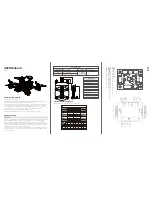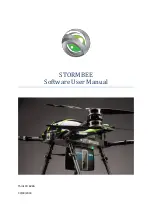
25
To use this feature, make sure that the environment where the aircraft takes off
is not changed.
Landing protection and accurate landing features can be enabled using the
App.
2.1.7 Omnidirectional Binocular Vision Sensing System
The binocular vision sensing systems on the front, rear, left, right, top, and bottom
of the EVO II Pro V3 aircraft use image data to calculate the distance between the
aircraft and potential obstacles. Once an obstacle is detected, the system will stop
the aircraft from flying forwards. The binocular vision systems on the front, rear,
and bottom are also equipped with a Starpoint positioning system. This system
uses the ultrasonic sensor to calculate the aircraft’s altitude and is combined with
the binocular vision camera to obtain the location information through image
analysis.
Binocular vision sensing system
System
Position on the Aircraft
Obstacle Sensing Range
Front
Front of the aircraft
0.5 to 18 m
Rear
Tail of the aircraft
0.5 to 16 m
Left/Right
Rear part on the left and right
sides of the aircraft
0.5 to 10 m
Top
Top of the aircraft
0.5 to 10 m
Bottom
Bottom of the aircraft
0.5 to 10 m
The figure below shows the covering angle of each binocular vision sensing system:












































